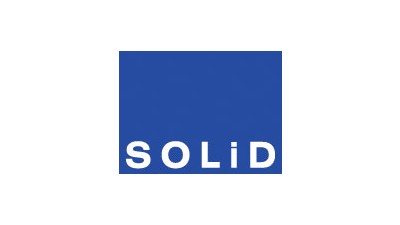Property Managers Bring A More Connected Approach To Sustainable Buildings

A sustainable building will help the environment, but it may not be the best solution for connectivity.
Over the last decade, many developers and property managers have aimed to meet the LEED certification system, a global rating system from the U.S. Building Council that ranks buildings based on how sustainable they are. More than 2.2M SF becomes certified every day. But the materials used in these sustainable buildings can block signals going in and out of a given space, making it difficult for tenants to take a call or send an email. Now, property managers are looking for solutions to make their buildings sustainable and well-connected.
“Many of these LEED-certified buildings deploy metal coatings on their windows,” SOLiD Director of Marketing Scott Gregory said. “These materials make it easy to go green, but going green can leave your building’s tenants and occupants seeing red.”
Low-emissivity window coatings, which are often used to insulate windows in LEED-certified buildings, are one reason for connectivity issues in energy-efficient buildings. These coatings rely on metal material that reduces the amount of infrared and ultraviolet light that passes through fiberglass into the building. While this can save electricity by reducing the need for cooling, it compromises cellular connectivity signals.

Other materials can also have a significant impact on connectivity within the building. Glass, concrete, brick and steel all play a role in hindering tenants’ access to connectivity. Beyond office productivity, connectivity problems can make it difficult for tenants to report an emergency, and impact a first responder’s ability to transmit signals from inside the building. These materials can block radio signals into a building depending on radio frequency.
“There is a growing reliance on cellular connectivity, and wireless data is the prime communication channel for business,” Gregory said. “With over 80% of all cell calls taking place indoors, building managers who want to implement sustainable materials need to also be planning for alternative technology to stay competitive.”
Distributed antenna systems can help buildings offer tenants the greatest opportunity to connect with the outside world without jeopardizing LEED status. DAS distributes cellular signals through a fiber optic network, providing coverage to dense spaces like office buildings or crowded facilities.
By placing an extensive network of antennas throughout a building, a property manager can improve cellular coverage and reliability for tenants, saving on cost and promoting a safe and secure environment.
“These DAS solutions are getting more recognition as a capital improvement to a property, enabling [Internet of Things] solutions, security and public safety functionality while still being able to use the most sustainable materials,” Gregory said. "This is a value-add that keeps properties relevant in today’s increasingly competitive real estate market.”
This feature was produced in collaboration between Bisnow Branded Content and SOLiD. Bisnow news staff was not involved in the production of this content.

